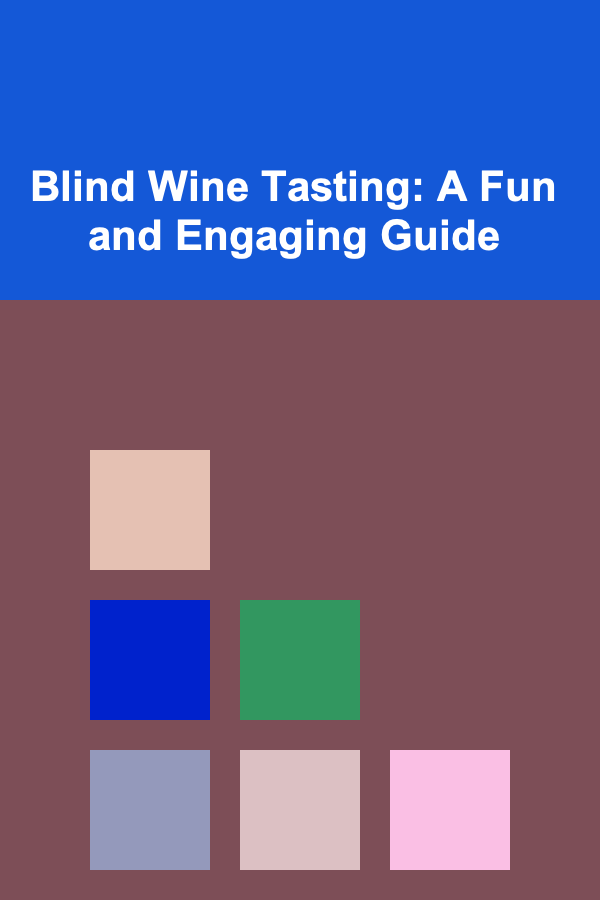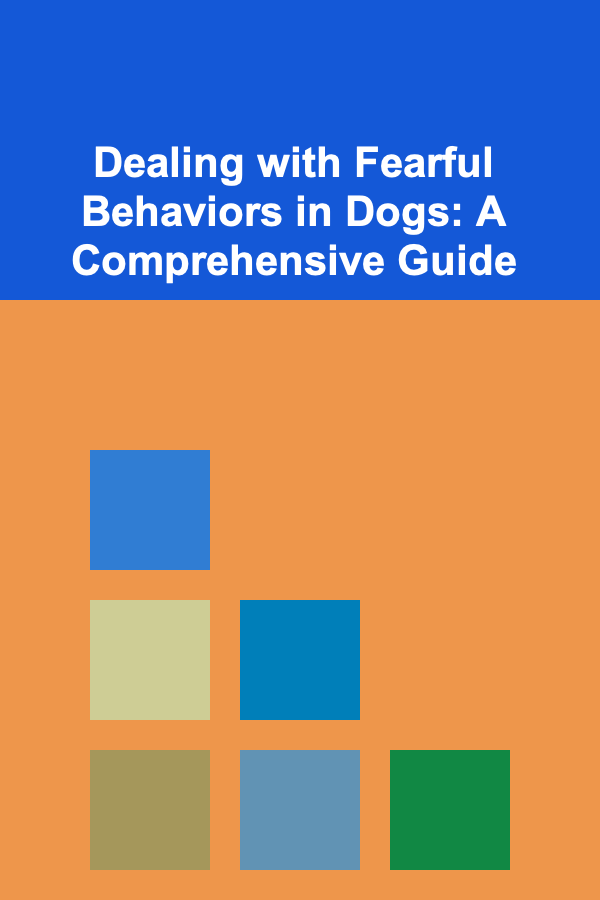
Blind Wine Tasting: A Fun and Engaging Guide
ebook include PDF & Audio bundle (Micro Guide)
$12.99$5.99
Limited Time Offer! Order within the next:

Blind wine tasting isn't just for seasoned sommeliers; it's a fantastic way for anyone to explore the world of wine in a focused and engaging manner. Removing the visual cues allows you to concentrate on the aromas, flavors, and textures, sharpening your senses and deepening your understanding of wine. While professional blind tasting aims for precise identification, this guide focuses on enjoying the process, learning along the way, and having fun with friends and family.
Why Blind Taste Wine?
Blind tasting offers several key benefits for wine enthusiasts of all levels:
- Enhanced Focus: Without the distraction of the label, you're forced to rely solely on your senses of smell and taste. This heightened focus allows you to pick up nuances you might otherwise miss.
- Objective Assessment: Labels can heavily influence perception. A prestigious label can predispose you to like a wine, even if it's not objectively superior. Blind tasting removes this bias, allowing you to evaluate the wine on its own merits.
- Sharpened Palate: Regularly practicing blind tasting helps you develop a more discerning palate. You'll become better at identifying different grape varieties, regions, and winemaking techniques.
- Expanded Knowledge: The process encourages you to think critically about what you're tasting and to connect your observations to known characteristics of different wines. This fosters a deeper understanding of the factors that influence wine quality and style.
- Increased Enjoyment: Blind tasting can transform a casual wine-drinking experience into an engaging and interactive activity, making it more enjoyable for everyone involved.
- It's a Fun Challenge! Trying to guess the wine is a great mental exercise and provides a fun, competitive (or cooperative) element to wine drinking.
Getting Started: Preparation is Key
A successful blind tasting requires some planning and preparation. Here's what you'll need:
- Wine Selection: Choose a selection of wines that offer enough variety to be interesting but aren't so obscure that they're impossible to identify. Aim for 4-6 wines for a good tasting experience. Consider selecting wines that represent different grape varieties (e.g., Chardonnay, Sauvignon Blanc, Pinot Noir, Cabernet Sauvignon), different regions (e.g., Burgundy, Napa Valley, Rioja), or different winemaking styles (e.g., oaked vs. unoaked Chardonnay, light-bodied vs. full-bodied Cabernet).
- Wine Budget: You don't need to spend a fortune on wines for a blind tasting. A range of price points can actually make it more interesting, as it highlights the value proposition of different wines. A good range is from $15-$50 per bottle.
- Blinding Supplies: Essential for removing visual cues. Options include:
- Wine Sleeves: Specially designed sleeves that fit over the bottle, concealing the label. These are the most convenient option.
- Paper Bags: Brown paper bags secured with rubber bands or tape. A simple and inexpensive alternative.
- Aluminum Foil: Wrapping the bottles in aluminum foil. Make sure the entire bottle is covered, including the neck, to prevent any visual clues.
- Glasses: Use good quality wine glasses that are all the same shape and size. This ensures that everyone experiences the wine in the same way. Ideally, use universal wine glasses, which are designed to work well with a variety of wine styles.
- Spit Buckets/Trays: Important for pacing yourself and preventing palate fatigue, especially when tasting multiple wines.
- Water: Essential for cleansing your palate between wines. Still or sparkling water is fine.
- Neutral Palate Cleansers: Crackers (plain, unsalted), baguette bread, or appleslices are helpful for neutralizing your palate between wines. Avoid strong flavors or spices that can interfere with your taste perception.
- Tasting Notes & Scoring Sheets: Provide participants with a structured way to record their observations. Include sections for appearance, aroma, palate, and overall impression. You can find templates online or create your own. Even a simple notebook works.
- Pens/Pencils: For taking notes.
- Decanters (Optional): If you suspect some of the wines may need aeration, decant them an hour or two before the tasting. However, for a truly blind tasting, don't let anyone see the wines being decanted.
- A Designator: Someone to pour the wines and manage the blindness. This person is the only one who knows which wine is in which glass.
Setting the Stage: Creating the Right Environment
The environment in which you taste wine can significantly impact your perception. Here are some tips for creating an optimal tasting environment:
- Neutral Lighting: Avoid brightly colored or fluorescent lighting, which can distort the wine's color. Natural daylight is ideal, but if that's not possible, use incandescent or LED lighting that mimics natural daylight.
- Clean Air: Ensure the room is well-ventilated and free from strong odors, such as perfume, cooking smells, or cleaning products. These aromas can interfere with your ability to detect the delicate nuances of the wine.
- Comfortable Temperature: The ideal room temperature for wine tasting is between 65-70°F (18-21°C).
- Minimal Distractions: Turn off the TV and put away your phones to minimize distractions and allow everyone to focus on the wines.
- Clean Table Surface: Use a clean, white tablecloth or placemats to provide a neutral background for evaluating the wine's color.
The Blind Tasting Process: A Step-by-Step Guide
Now comes the fun part! Here's a breakdown of the blind tasting process:
-
Preparation: The designated person will pour a small amount of each wine (around 2-3 ounces) into the glasses, ensuring that each glass is labeled with a number or letter that corresponds to a master list only they possess.
-
Appearance: Begin by observing the wine's appearance. Hold the glass at a slight angle against a white background and assess the following:
- Clarity: Is the wine clear, hazy, or cloudy? Clarity indicates the wine's quality and stability.
- Color: Note the color of the wine. Red wines can range from pale ruby to deep garnet or even purple. White wines can range from pale straw to deep gold. Rosé wines can range from pale salmon to vibrant pink. Color can provide clues about the grape variety, age, and winemaking techniques. Older red wines tend to be lighter in color, while younger red wines are more deeply colored.
- Intensity: How intense is the color? A deeply colored wine usually indicates a more concentrated wine.
- Legs (Tears): Swirl the wine in the glass and observe the legs (or tears) that form on the sides of the glass. While often misinterpreted as an indicator of quality, legs primarily indicate the wine's alcohol content and sugar levels. More prominent legs usually indicate a higher alcohol or sugar content.
Record your observations in your tasting notes.
-
Aroma: The aroma is perhaps the most important aspect of wine tasting. Gently swirl the wine in the glass to release its aromas. Then, bring the glass to your nose and inhale deeply. Try to identify the different aromas you detect. Consider the following categories:
- Fruit: What kind of fruit aromas do you detect? Are they red fruits (e.g., cherry, raspberry, strawberry), black fruits (e.g., blackberry, blackcurrant, plum), or blue fruits (e.g., blueberry)? For white wines, consider citrus fruits (e.g., lemon, grapefruit, lime), stone fruits (e.g., peach, apricot, nectarine), or tropical fruits (e.g., pineapple, mango, passionfruit).
- Floral: Do you detect any floral aromas, such as rose, violet, lavender, or honeysuckle?
- Spice: Are there any spice aromas, such as black pepper, clove, cinnamon, or vanilla?
- Herbal/Vegetal: Do you detect any herbal or vegetal aromas, such as bell pepper, grass, mint, or eucalyptus?
- Earth: Are there any earthy aromas, such as mushroom, forest floor, or truffle?
- Oak (If Applicable): Do you detect any oak aromas, such as vanilla, toast, cedar, or smoke?
- Other: Are there any other aromas that you can identify, such as leather, tobacco, or chocolate?
Don't be afraid to be descriptive. There are no right or wrong answers. The goal is to accurately describe what you're smelling.
Consider the intensity of the aromas. Are they faint, moderate, or intense?
Record your observations in your tasting notes.
-
Palate: Take a small sip of the wine and let it coat your entire mouth. Pay attention to the following:
- Sweetness: Is the wine dry, off-dry, semi-sweet, or sweet?
- Acidity: How tart is the wine? High-acid wines can be described as crisp or zesty, while low-acid wines can be described as soft or flabby. Acidity is a crucial component of a wine's structure and balance.
- Tannin (For Red Wines): Tannins are compounds found in grape skins, seeds, and stems that contribute to a wine's astringency. How tannic is the wine? High-tannin wines can feel grippy or astringent in the mouth, while low-tannin wines can feel soft and smooth.
- Body: How does the wine feel in your mouth? Is it light-bodied, medium-bodied, or full-bodied? Body is influenced by factors such as alcohol content, glycerol, and tannins.
- Flavor: Do the flavors on the palate mirror the aromas you detected on the nose? Are there any new flavors that you didn't detect before?
- Finish: How long does the flavor linger in your mouth after you swallow the wine? A long finish is generally considered a sign of quality.
Record your observations in your tasting notes.
-
Overall Impression: Consider the wine as a whole. Is it balanced? Is it complex? Is it enjoyable? What is your overall impression of the wine?
-
Guess the Wine (and Justify!): Based on your observations, make your best guess as to the grape variety, region, and vintage (if possible). More importantly, explain why you think it is that wine. This is the key to learning. Even if you're wrong, the thought process is what matters.
-
Reveal and Discuss: Once everyone has made their guesses, the designated person reveals the wines. Discuss your observations and compare notes. What did you get right? What did you miss? What did you learn?
-
Repeat: Repeat the process with the remaining wines. Remember to cleanse your palate between each wine.
Tips for Improving Your Blind Tasting Skills
Blind tasting is a skill that improves with practice. Here are some tips to help you develop your palate and improve your accuracy:
- Taste Regularly: The more you taste, the better you'll become at identifying different aromas and flavors. Try to taste a variety of wines from different regions and grape varieties.
- Focus on One Element at a Time: Don't try to analyze everything at once. Focus on one aspect of the wine at a time, such as the fruit aromas, the acidity, or the tannins.
- Build Your Wine Vocabulary: Learn the terms used to describe different wine characteristics. This will help you articulate your observations more precisely. Consider using a wine aroma wheel as a visual aid.
- Read About Wine: Learn about the different grape varieties, regions, and winemaking techniques. This knowledge will help you make more informed guesses during blind tastings.
- Practice with Others: Blind tasting with friends or family can be a fun and educational experience. You can learn from each other's observations and perspectives.
- Don't Be Afraid to Be Wrong: Everyone makes mistakes. The key is to learn from them. Don't get discouraged if you don't guess the wine correctly. The process of analyzing the wine is more important than getting the right answer.
- Keep a Wine Journal: Record your tasting notes and observations in a wine journal. This will help you track your progress and identify patterns in your tasting preferences.
- Consider "Horizontal" and "Vertical" Tastings:
- Horizontal Tasting: Tasting wines from the same vintage but different producers or regions. This helps you understand how terroir and winemaking influence the same vintage.
- Vertical Tasting: Tasting wines from the same producer and grape variety but different vintages. This shows the effect of different weather conditions on the same wine.
Common Wine Varieties and Their Defining Characteristics (Cheat Sheet)
This is a simplified guide to help you get started. Remember that winemaking techniques and regional variations can significantly influence the final product.
White Wines
- Chardonnay: Can range from lean and crisp (unoaked) to rich and buttery (oaked). Common aromas include apple, pear, citrus, vanilla, butterscotch, and hazelnut. Acidity can range from medium to high.
- Sauvignon Blanc: Typically crisp and herbaceous with high acidity. Common aromas include grapefruit, gooseberry, passionfruit, grass, and bell pepper.
- Riesling: Aromatic and high in acidity, with flavors ranging from dry to sweet. Common aromas include apricot, peach, lime, petrol (a desirable characteristic in some Rieslings), and honey.
- Pinot Grigio/Gris: Light-bodied and refreshing with subtle flavors. Common aromas include lemon, pear, and white flowers. Acidity is typically medium to high.
Red Wines
- Cabernet Sauvignon: Full-bodied with high tannins and moderate acidity. Common aromas include blackcurrant, blackberry, cedar, tobacco, and vanilla (from oak aging).
- Pinot Noir: Light-bodied with high acidity and low tannins. Common aromas include cherry, raspberry, strawberry, mushroom, and forest floor. Often described as earthy.
- Merlot: Medium-bodied with softer tannins than Cabernet Sauvignon. Common aromas include plum, black cherry, chocolate, and vanilla (from oak aging).
- Syrah/Shiraz: Full-bodied with high tannins and moderate acidity. Common aromas include blackberry, black pepper, spice, and smoked meat.
- Sangiovese: Medium-bodied with high acidity and firm tannins. Common aromas include cherry, plum, dried herbs, and earthy notes. The primary grape of Chianti.
Making it Fun: Game Ideas and Variations
Blind tasting can be even more enjoyable with a little creativity. Here are some game ideas and variations to spice things up:
- Classic Guessing Game: Each person tries to guess the grape variety, region, and vintage of each wine. Award points for each correct answer. The person with the most points at the end wins.
- Aroma Bingo: Create bingo cards with different wine aromas. As you taste the wines, mark off the aromas you detect. The first person to get bingo wins a prize.
- Wine Jeopardy: Create Jeopardy-style questions about wine and test your knowledge.
- Blind Tasting with Food Pairings: Pair each wine with a different food and try to identify the best pairings.
- "Mystery Wine" Challenge: Designate one wine as the "mystery wine" and offer a special prize to the person who guesses it correctly. Make it something particularly difficult or unusual.
- Team Tasting: Divide into teams and have each team work together to identify the wines. This encourages collaboration and discussion.
- Write a Wine Review: After tasting each wine, have everyone write a short wine review, including their impressions of the wine's appearance, aroma, palate, and overall quality.
- Theme Nights: Focus on a specific region (e.g., Burgundy, Napa Valley) or grape variety (e.g., Cabernet Sauvignon, Chardonnay) for a themed blind tasting.
Beyond the Basics: Advanced Blind Tasting Considerations
Once you've mastered the basics, you can explore more advanced aspects of blind tasting:
- Analyzing Wine Structure: Pay closer attention to the wine's structure, including its acidity, tannins, alcohol, and body. How do these elements interact to create the overall impression of the wine?
- Identifying Terroir: Try to identify the terroir of the wine. What are the characteristics of the soil, climate, and topography that might have influenced the wine's flavor profile?
- Recognizing Winemaking Techniques: Learn to recognize the different winemaking techniques that can influence a wine's flavor, such as oak aging, malolactic fermentation, and lees contact.
- Understanding Wine Faults: Learn to identify common wine faults, such as cork taint (TCA), oxidation, and reduction.
- Studying Blind Tasting Methodologies: Explore formal blind tasting methodologies used by sommeliers and wine critics. Organizations like the Court of Master Sommeliers offer extensive training and certifications.
Conclusion: Embrace the Journey
Blind wine tasting is a journey of discovery. It's a process of learning, refining your senses, and expanding your appreciation for the world of wine. Don't be intimidated by the perceived complexity of blind tasting. Focus on enjoying the process, experimenting with different wines, and learning from your experiences. The more you practice, the more confident and skilled you'll become. So gather your friends, pour some wine, and embark on a fun and engaging blind tasting adventure!

Best Organization Tools for Meal Planning
Read More
How to Make the Most of Your Bathroom Storage with Creative Ideas
Read More
How to Organize a Family Talent Show and Art Exhibition
Read More
Monetizing Deep Learning: A Guide to Earning Money with AI
Read More
Monetizing Your Deep Learning Skills: Start Earning Passive Income Today
Read More
Dealing with Fearful Behaviors in Dogs: A Comprehensive Guide
Read MoreOther Products

Best Organization Tools for Meal Planning
Read More
How to Make the Most of Your Bathroom Storage with Creative Ideas
Read More
How to Organize a Family Talent Show and Art Exhibition
Read More
Monetizing Deep Learning: A Guide to Earning Money with AI
Read More
Monetizing Your Deep Learning Skills: Start Earning Passive Income Today
Read More